
The kilogram is the base unit of mass in the International System of Units (SI), having the unit symbol kg. 'Kilogram' means 'one thousand grams' and is colloquially abbreviated to kilo.
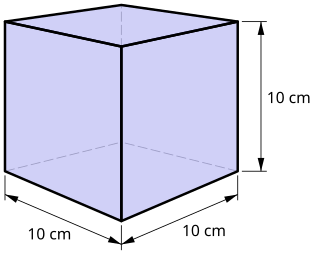
The litre or liter is a metric unit of volume. It is equal to 1 cubic decimetre (dm3), 1000 cubic centimetres (cm3) or 0.001 cubic metres (m3). A cubic decimetre occupies a volume of 10 cm × 10 cm × 10 cm and is thus equal to one-thousandth of a cubic metre.

The pound or pound-mass is a unit of mass used in both the British imperial and United States customary systems of measurement. Various definitions have been used; the most common today is the international avoirdupois pound, which is legally defined as exactly 0.45359237 kilograms, and which is divided into 16 avoirdupois ounces. The international standard symbol for the avoirdupois pound is lb; an alternative symbol is lbm, #, and ℔ or ″̶.
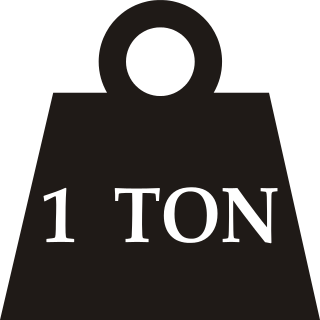
Ton is any of several units of measure of mass, volume or force. It has a long history and has acquired several meanings and uses.
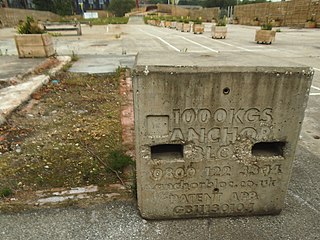
The tonne is a unit of mass equal to 1,000 kilograms. It is a non-SI unit accepted for use with SI. It is also referred to as a metric ton in the United States to distinguish it from the non-metric units of the short ton and the long ton. It is equivalent to approximately 2,204.6 pounds, 1.102 short tons, and 0.984 long tons. The official SI unit is the megagram (Mg), a less common way to express the same amount.

United States customary units form a system of measurement units commonly used in the United States and most U.S. territories since being standardized and adopted in 1832. The United States customary system developed from English units that were in use in the British Empire before the U.S. became an independent country. The United Kingdom's system of measures evolved by 1824 to create the imperial system, which was officially adopted in 1826, changing the definitions of some of its units. Consequently, while many U.S. units are essentially similar to their imperial counterparts, there are noticeable differences between the systems.

The mole (symbol mol) is a unit of measurement, the base unit in the International System of Units (SI) for amount of substance, a quantity proportional to the number of elementary entities of a substance. One mole is an aggregate of exactly 6.02214076×1023 elementary entities (approximately 602 sextillion or 602 billion times a trillion), which can be atoms, molecules, ions, ion pairs, or other particles. The number of particles in a mole is the Avogadro number (symbol N0) and the numerical value of the Avogadro constant (symbol NA) expressed in mol-1. The value was chosen on the basis of the historical definition of the mole as the amount of substance that corresponds to the number of atoms in 12 grams of 12C, which made the mass of a mole of a compound expressed in grams, numerically equal to the average molecular mass or formula mass of the compound expressed in daltons. With the 2019 revision of the SI, the numerical equivalence is now only approximate but may be assumed for all practical purposes.

The metric system is a system of measurement that standardizes a set of base units and a nomenclature for describing relatively large and small quantities via decimal-based multiplicative unit prefixes. Though the rules governing the metric system have changed over time, the modern definition, the International System of Units (SI), defines the metric prefixes and seven base units: metre (m), kilogram (kg), second (s), ampere (A), kelvin (K), mole (mol), and candela (cd).

The gram is a unit of mass in the International System of Units (SI) equal to one thousandth of a kilogram.

Troy weight is a system of units of mass that originated in the Kingdom of England in the 15th century and is primarily used in the precious metals industry. The troy weight units are the grain, the pennyweight, the troy ounce, and the troy pound. The troy grain is equal to the grain unit of the avoirdupois system, but the troy ounce is heavier than the avoirdupois ounce, and the troy pound is lighter than the avoirdupois pound. Legally, one troy ounce equals exactly 31.1034768 grams.
The ounce is any of several different units of mass, weight, or volume and is derived almost unchanged from the uncia, an Ancient Roman unit of measurement.
The quintal or centner is a historical unit of mass in many countries which is usually defined as 100 base units, such as pounds or kilograms. It is a traditional unit of weight in France, Portugal, and Spain and their former colonies. It is commonly used for grain prices in wholesale markets in Ethiopia, Eritrea and India, where 1 quintal = 100 kg (220 lb).
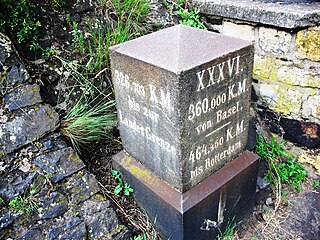
Myria- (symbol my) is a now obsolete decimal metric prefix denoting a factor of 104 (ten thousand). It originates from the Greek μύριοι (mýrioi) (myriad). The prefix was part of the original metric system adopted by France in 1795, but was not adopted when the SI prefixes were internationally adopted by the 11th CGPM conference in 1960.
The gravitational metric system is a non-standard system of units, which does not comply with the International System of Units (SI). It is built on the three base quantities length, time and force with base units metre, second and kilopond respectively. Internationally used abbreviations of the system are MKpS, MKfS or MKS . However, the abbreviation MKS is also used for the MKS system of units, which, like the SI, uses mass in kilogram as a base unit.

The hectare is a non-SI metric unit of area equal to a square with 100-metre sides (1 hm2), that is, 10,000 square metres, and is primarily used in the measurement of land. There are 100 hectares in one square kilometre. An acre is about 0.405 hectares and one hectare contains about 2.47 acres.

The cubic metre or cubic meter is the unit of volume in the International System of Units (SI). Its symbol is m3. It is the volume of a cube with edges one metre in length. An alternative name, which allowed a different usage with metric prefixes, was the stère, still sometimes used for dry measure. Another alternative name, no longer widely used, was the kilolitre.
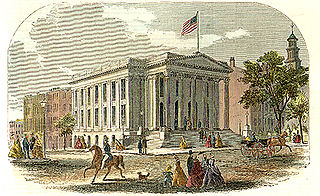
The imperial and US customary measurement systems are both derived from an earlier English system of measurement which in turn can be traced back to Ancient Roman units of measurement, and Carolingian and Saxon units of measure.
The myriagram is a former French and metric unit of mass equal to 10,000 grams. Although never as widely used as the kilogram, the myriagram was employed during the 19th century as a replacement for the earlier American customary system quarter, which was equal to 25 pounds (11,340 g).
Before it adopted the metric system in 1816, the area that now constitutes Belgium used a number of units of measurement to measure different types of quantities including length, mass, and area. Since 1820, the International Metric System has been compulsory in Belgium. Initially, different names were used for units like metre, litre, kilogram, etc.














